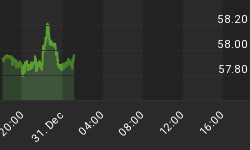Whenever an asset falls in value by 80%, it has to be examined for its potential as a contrarian, value-oriented investment. Such is the case with Palladium. In a commodity bull market, where substantial run- ups have occurred in oil, copper, precious metals, and other raw materials, palladium has escaped the notice of most investors. Even more interesting, is that the price of palladium has declined in the midst of rising demand. I believe that this trend is about to reverse, as the manufacturing community is taking notice of the substantial spread between the two metals that are similar in their industrial use.
My Mechanic Knows Best!
This past weekend, my wife and I took our car to the local mechanic. We needed to replace our catalytic converter, and figured that we would get a couple different quotes on how much it would cost us. Now, I don't know too much about cars, but I figured that a catalytic converter was a catalytic converter. Meaning, if a catalytic converter accomplished its goal- which was aid in clean fuel emissions, than it was just as good as any other catalytic converter. Consequently, I assumed that the prices of the different converters would be relatively the same. I was shocked to find out that Converter A was twice as much expensive as Converter B. Of course, this all made sense when my mechanic mentioned that the difference between the converters was the primary metal that was used. "Palladium," he said, "is substantially cheaper than platinum!"
The Increase Demand for the Metal
Although palladium is used in a variety of industries, from electrical components to surgical instruments, its greatest demand is set to come from the automobile industry. The demand for palladium from the automobile industry is based purely on cost. The spread between the two metals is significant. If you look at the charts below, you can see that Platinum is currently trading at over $900/ounce, while Palladium is just under $200/ounce.


From a cost-effective point of view, palladium catalytic converters are substantially cheaper. However, as the charts above show, this has not always been the case. When palladium was at record highs, the automobile industry switched to platinum based catalytic converters and in the process, accumulated a substantial amount of reserves.. As the automobile industry starts to deplete its platinum reserves, they will revert back to the cheaper palladium. In fact, this has already started to happen. Industry reports show that demand for platinum from the North American automobile industry declined by 10 % in 2004. Conversely, the demand for palladium increased by 20 % in 2004.
The demand for palladium has also increased in China. With the fastest growing automobile market in the world, the Chinese are scrambling to meet its fuel efficient standards for the 2008 Beijing Olympics. Once again, this bodes well for palladium since it is a cheaper substitute to platinum.
The Other Precious Metal
In addition, the longer a bull market in commodities rolls along, the more palladium will likely come to be viewed as a precious, rather than industrial, metal. Like, silver, which is often viewed as a "poor man's gold", palladium may experience its biggest gains late in a precious metals market.
Currently, palladium is trading just under $200/ounce. Looking at the chart below, we can see that palladium has bounced between the 180 and 205 levels. At this price, I would buy the metal in increments. From a psychological perspective, investors are still uneasy about an intermediate upward trend in the metal. I would expect continued resistance throughout its move.

Now, investors should beware: historically, Palladium has been a volatile and speculative metal, with prices trading from over $1000 per ounce (January 2001) to as lows as $150 in April 2003. I believe, however, that because the potential gain for palladium could be substantial, it can be looked at by many investors as an attractive speculative counterpart to gold and silver, the holdings that should be treated like the cornerstones of a precious metals portfolio.
















